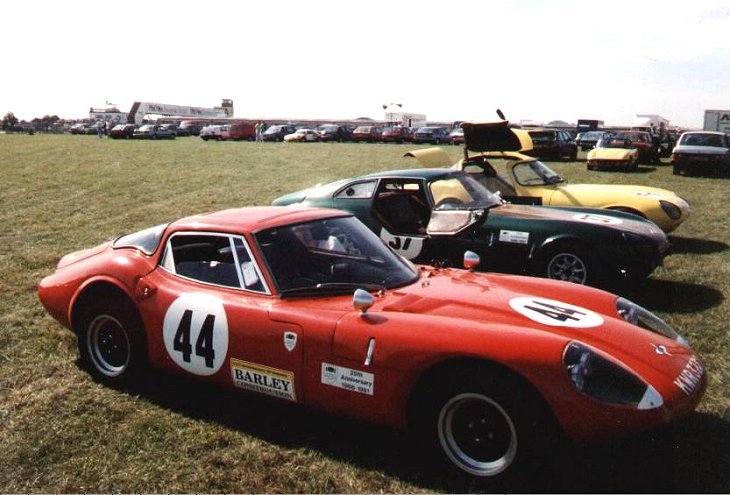Description
The Marcos GT 1800 was one of the most important early models in the long line of distinctive British sports cars produced by Marcos during the 1960s. Compact, lightweight, and unmistakable in appearance, the GT 1800 helped establish Marcos as a serious low-volume performance marque, combining innovative construction with lively performance and a driving experience that appealed to enthusiasts who wanted something more specialised and individual than mass-produced sports cars. It was introduced in the mid-1960s as an evolution of the earlier Volvo-powered GT, but the 1800 moved the model into a more accessible category by adopting robust, widely available British engine options.
The GT 1800 retained the classic Marcos silhouette: a long, flowing nose, low-slung cabin, and sharply cut tail section. Its bodywork was constructed from fibreglass, a technique Marcos had mastered early and used to create lightweight, aerodynamically efficient shapes that were easy to repair. Underneath, the car employed the distinctive plywood monocoque chassis pioneered by company founder Jem Marsh and engineer Frank Costin. This wooden monocoque was incredibly strong, surprisingly durable, and exceptionally light. It also offered excellent torsional rigidity, giving the GT 1800 precise and predictable handling despite its modest size.
Power came from the robust and tunable 1.8-litre Volvo B18 engine, one of the most durable four-cylinder units of its era. With twin carburettors, the B18 typically produced around 90 to 100 horsepower in standard form, though many owners opted for tuning upgrades to push power well past 115 horsepower. Coupled with a low kerb weight of roughly 750 kilograms, the GT 1800 offered lively acceleration, sharp throttle response, and impressive mid-range torque. The car could reach top speeds in the region of 110 to 120 mph depending on tuning, placing it firmly among contemporary British sports cars such as the MGB GT and Triumph GT6, but with a more focused, competition-bred character.
The suspension setup blended simplicity with performance. Independent front suspension with coil springs and wishbones provided sharp turn-in and a connected feel, while the rear used a live axle with well-controlled damping to balance traction and predictability. Braking was handled by discs at the front and drums at the rear in most early examples. The GT 1800’s low stance, minimal overhangs, and rigid chassis gave it well-balanced handling that rewarded smooth inputs and rewarded drivers with high levels of grip on twisty roads.
Inside, the Marcos GT 1800 followed the company’s philosophy of purposeful minimalism. The cabin was narrow and compact, with a low seating position that placed the driver almost level with the centreline of the car. The dashboard, usually finished in wood veneer or simple painted surfaces, housed a straightforward arrangement of Smiths instruments. Ventilation was basic and luggage space limited, but comfort was never the priority. The GT 1800 was built for driving purity, lightness, and mechanical honesty, and its interior reflected that ethos.
On the road, the GT 1800 earned a reputation for agility and character. The combination of the lightweight monocoque and the willing B18 engine made it quick off the line and enjoyable at all speeds. The steering was light but direct, the brakes strong for the era, and the compact dimensions made the car feel at home on narrow British roads. The car’s stability at higher speeds impressed road testers, and despite its unconventional construction, it proved tough and reliable.
In competition, the GT 1800 continued the strong motorsport pedigree Marcos had already begun building. It appeared in club-level racing, hill climbs, and endurance events, often punching above its weight thanks to its low mass and responsive chassis. Many racing examples were modified extensively, with tuned engines, revised suspension setups, and aerodynamic tweaks that further exploited the monocoque’s potential.
Production numbers were modest, as with all Marcos models of the period, but the GT 1800 played an important role in establishing the company’s reputation during the 1960s. It bridged the gap between the early, more experimental Marcos cars and the later, more powerful V6 and V8 models. The simple, tough Volvo engine also made the GT 1800 one of the more practical classic Marcos models, appealing to enthusiasts who valued reliability alongside performance.
Today, the Marcos GT 1800 is appreciated as a charming and distinctive classic. It represents a period when small British manufacturers experimented boldly with materials and design, and when lightweight construction still delivered clear advantages in performance and handling. The GT 1800 remains one of the purest expressions of the Marcos philosophy: low weight, simple engineering, unconventional design, and a driving experience that is both engaging and unmistakably individual.

